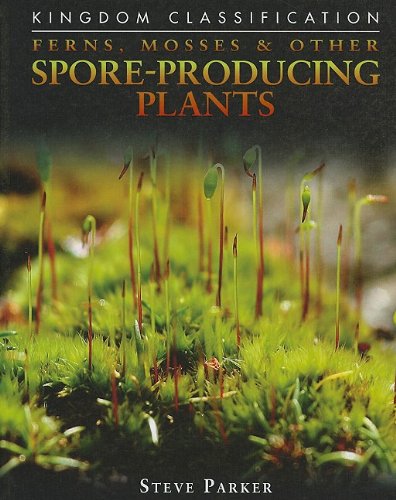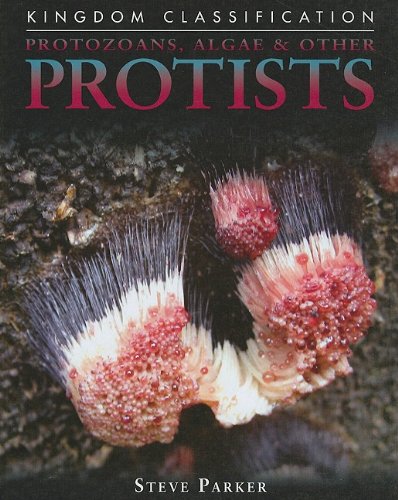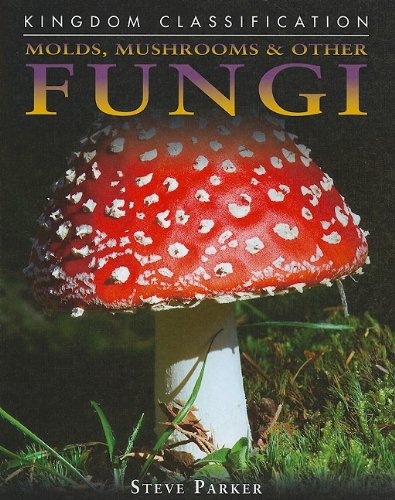-
Ferns, Mosses & Other Spore-Producing Plants
Steve Parker
Library Binding (Compass Point Books, July 1, 2009)This book introduces you to a fascinating group of plants, from hornworts to tree ferns. It examines how these plants get energy and reproduce, as well as how they evolved from prehistoric plants. It also looks at how people use spore producing plants for food, decoration, and even medicine. Did You Know? &&/UL&& Some ferns are as tall as trees, reaching 80 feet (24 meters). There are about 10,000 species of mosses. One species of moss is used as stuffing for beds and pillows. Y
Y
-
Protozoans, Algae & Other Protists
Steve Parker
Library Binding (Compass Point Books, July 1, 2009)This book introduces you to creatures from the protist kingdom, from microscopic protozoans to seaweedlike algae. It examines the parts, life cycle, and reproduction of various types of protists. It also looks at the harmful effects some protists have on humans. Did You Know? The deadly disease malaria is caused in part by the protist Plasmodium. The fossils of one type of protist, the red algae, date back more than 500 million years. Paramecium, a well known protist, uses hairlike cilia to sweep food into its mouth. Z
Z
-
Redwoods, Hemlocks & Other Cone-Bearing Plants
Steve Parker
Library Binding (Compass Point Books, July 1, 2009)This book introduces you to an interesting group of plants, from the mighty redwoods to the sharp needled spruces. It examines the various types of conifers, their reproductive methods, and how they get their energy. It also looks at the ecological importance of these woody plants and how they are used in industry. Did You Know? &&/UL&& The tallest living thing on Earth is a coast redwood, measuring a height of about 380 feet (115 meters). Most conifers keep their leaves throughout the year. The cones of some pine trees can reach 5 feet (1.5 m) long. Y
Y
-
Molds, Mushrooms & Other Fungi
Steve Parker
Library Binding (Compass Point Books, July 1, 2009)This book introduces you to the fungi kingdom, from familiar mushrooms to unicellular yeasts. It examines the types of fungi, their reproductive methods, and how they feed. It also looks at modern uses of fungi, as well as how fungi recycle dead organic matter into useful nutrients. Did You Know? There are about 100,000 species of fungi. Some fungi digest their food outside of their bodies. Not counting tree roots, 90 percent of all living matter in forest soil is made up of fungi. Y
Y
-
Arachnids
Joanna Brundle
Paperback (KidHaven Publishing, July 15, 2019)While some people are afraid of spiders and scorpions, others are fascinated by these cool creatures, which are both part of the arachnid family. Readers broaden their knowledge of essential early biology concepts through captivating, well-researched, and accessible main text that is also age-appropriate. They learn about the habitats, life cycles, and eating habits of the creepy crawly creatures known scientifically as arachnids. In addition to stimulating fact boxes, more information is provided in detailed graphic organizers, informational diagrams, a helpful glossary, and bright, full-color photographs. P
P
-
Mammals
Angela Royston
Library Binding (Heinemann, Jan. 1, 2015)This fascinating series takes a very simple look at animal classifications, with each book focussing on a different group of animal. This book is about mammals: what they do, how they behave, and how these characteristics are different from other groups of animals. Beautifully illustrated with colorful photographs, the book shows many examples of different types of mammals in their natural environment. N
N
-
Amphibians
Erica Donner
Library Binding (Bullfrog Books, Aug. 1, 2016)In Amphibians, early readers learn about the defining characteristics of this animal group. Vibrant, full-color photos and carefully leveled text will engage early readers as they discover what features set these animals apart. K
K




